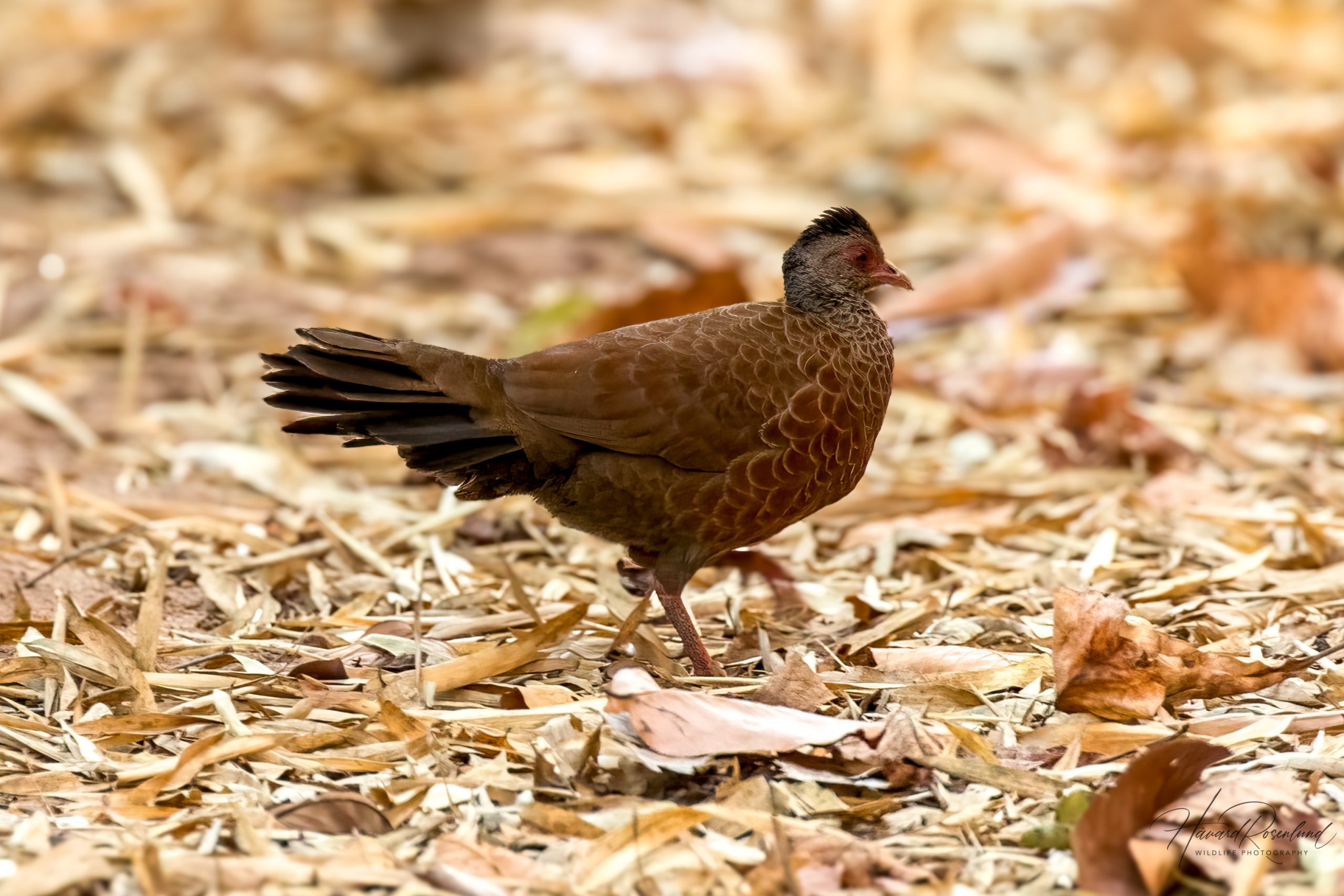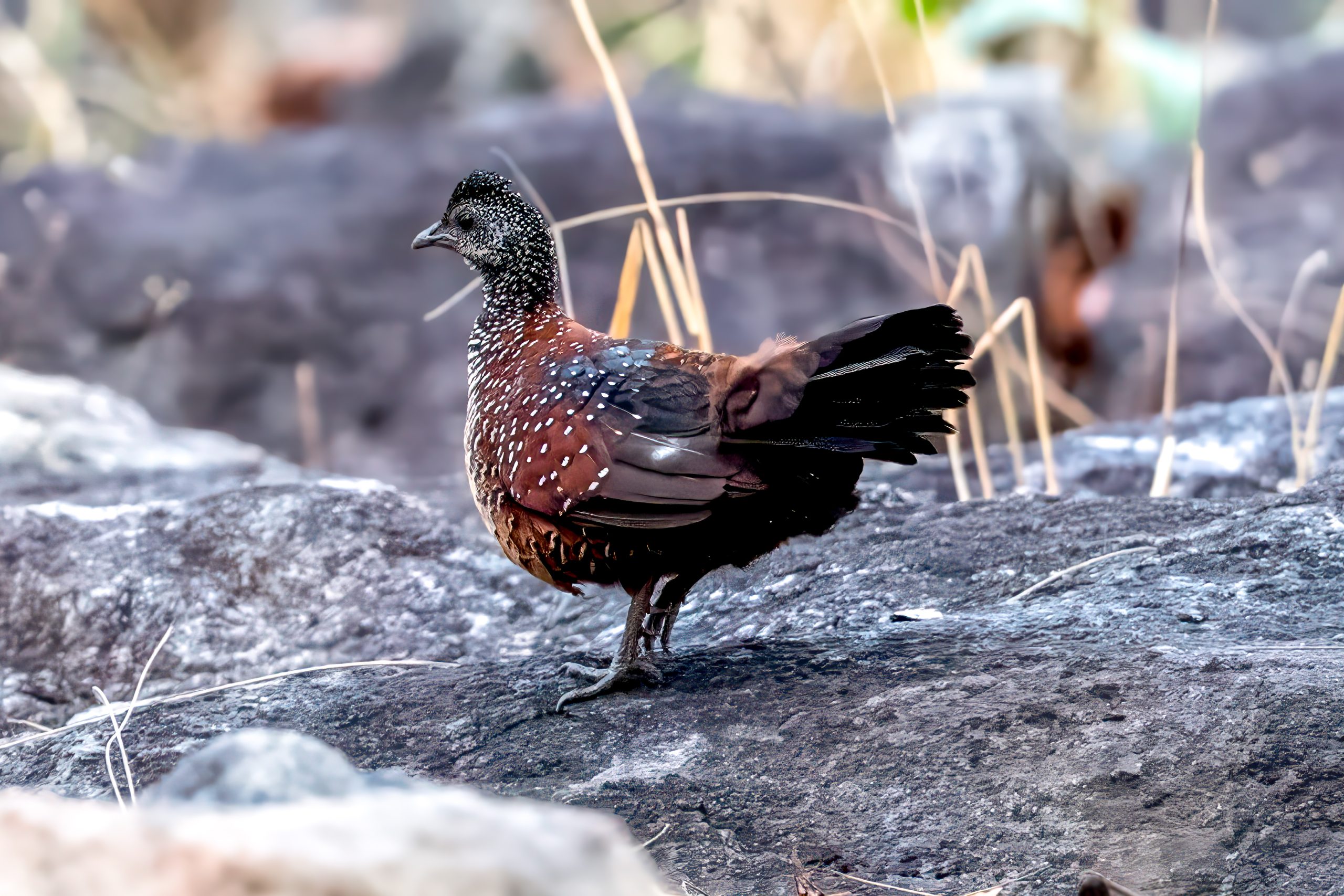Description
The red spurfowl (Galloperdix spadicea) is a species of landfowl endemic to India. This medium-sized bird measures approximately 33-36 cm (13-14 in) in length. It is characterized by its rich chestnut plumage, with darker brown on the upper parts and lighter underparts. The male is distinct with two prominent spurs on its legs, which are absent or less developed in females. The red spurfowl can be distinguished from similar species such as the painted spurfowl (Galloperdix lunulata) by its more uniform coloration and the absence of intricate patterns on its feathers.
Diet & habitat
The red spurfowl inhabits deciduous and evergreen forests, often preferring dense undergrowth and bamboo thickets. It is also found in scrublands and forest edges. This species is omnivorous, feeding on a variety of seeds, fruits, insects, and small invertebrates. The red spurfowl forages by scratching the ground with its feet to uncover food, a behavior common among many ground-dwelling birds.
Nesting
The breeding season of the red spurfowl generally occurs between February and May. During this time, males engage in elaborate displays to attract females, including vocalizations and physical displays of their spurs. Nests are typically shallow depressions in the ground, lined with leaves and hidden under dense vegetation to protect from predators. The female lays a clutch of 3-5 eggs, which she incubates for about 18-21 days. After hatching, the chicks are precocial, meaning they are relatively mature and mobile from the moment of birth, and they fledge within a few weeks.
Status
The red spurfowl is currently listed as least concern by the IUCN Red List, indicating that it is not considered to be at immediate risk of extinction. However, habitat loss due to deforestation and human encroachment poses ongoing threats to its population.





